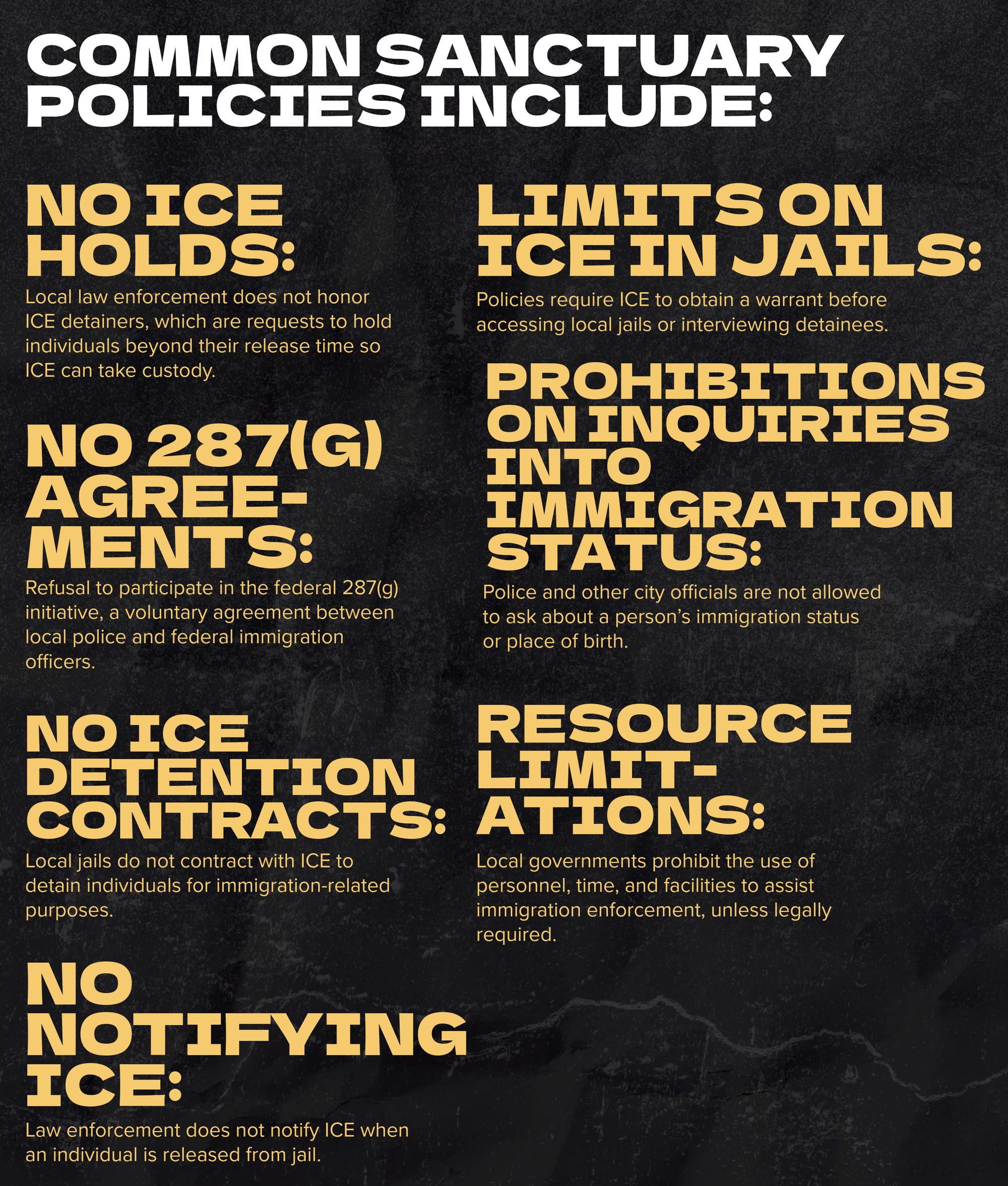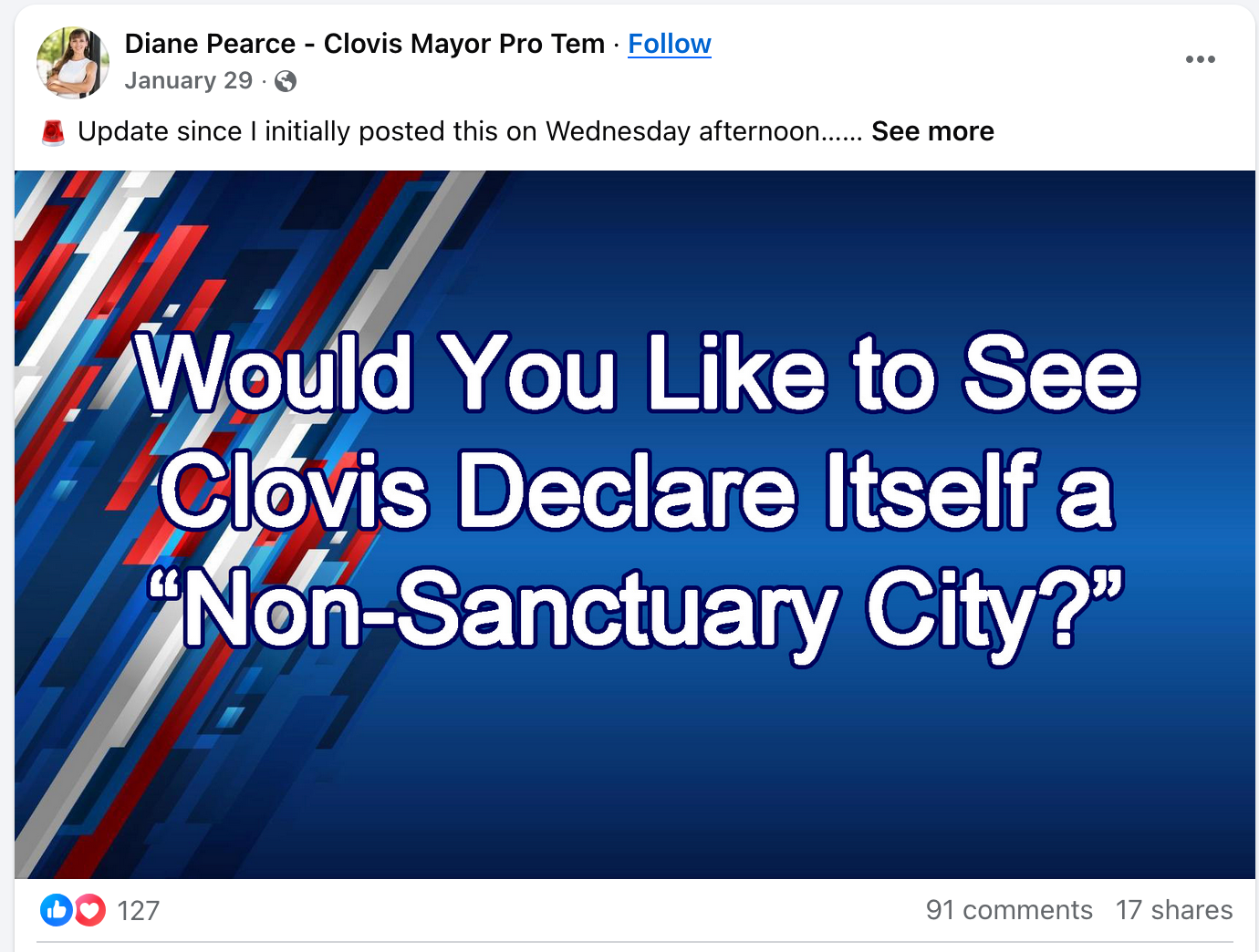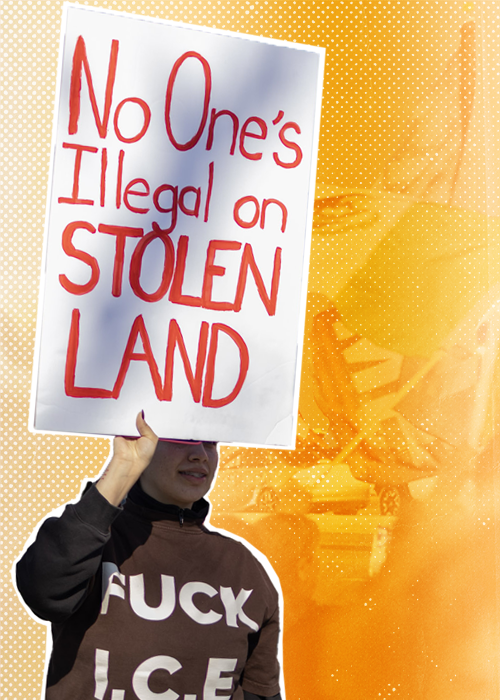Fresno has a long, complicated history with its immigrant communities. In 2017, as pressure to declare Fresno a sanctuary city started to build, then mayor Lee Brand tiptoed around labelling itself as such despite admitting local policies being “essentially the same as most of the sanctuary cities in California.”
In January of this year, current Mayor Jerry Dyer told the Fresno Bee that the city would not work with deportation raids. “We do not want members of our immigrant communities, especially our children, being afraid to attend school or a place of worship,” he said. However, on Friday, May 30, 2025, Dyer made it clear “Fresno is not, by any definition, a sanctuary city.”
His comment was made as a response to Fresno’s inclusion on a list of sanctuary cities published, and then unpublished, by the U.S. Department of Homeland Security (DHS) and 24 days after Fresno County District 2 Supervisor Garry Bredefeld read a letter from U.S. Secretary of Transportation Sean Duffy, which threatened, among other things, to take away funding if Fresno did not cooperate with immigration enforcement.
What Is a Sanctuary City?
The term "sanctuary city" refers to a city that refuses to use local resources to enforce federal immigration laws and has policies that explicitly limit cooperation with federal immigration authorities. These policies aim to protect undocumented residents from deportation solely due to their immigration status.

Are Sanctuary Policies Effective?
A 2017 report from the Center for American Progress found that sanctuary policies have positive effects on both crime rates and local economies.
“Sanctuary jurisdictions report higher median household income, less poverty, higher employment-to-population ratios, and lower unemployment rates.”, summarized the National Immigration Law Center.
According to the report, by not involving local law enforcement in federal immigration enforcement, sanctuary cities foster trust within their communities, allowing immigrants to feel safer reporting crimes or engaging with authorities without fear of deportation.
Furthermore, the report concluded that keeping families intact and supporting the participation of all residents in the economy boosts local economic growth, especially in smaller counties where the loss of a single individual can have a disproportionate impact.
But Isn’t California a Sanctuary State?
Yes, California has been a sanctuary state since 2017, following the passage of SB 54, also known as the “California Values Act,” under Governor Jerry Brown. This legislation aims to protect undocumented individuals from deportation by limiting local law enforcement’s cooperation with federal immigration authorities.
Under California’s sanctuary state laws, local police are restricted from asking about immigration status, holding individuals for ICE beyond their release time, or sharing information with federal immigration authorities unless required by law (i.e. they have a warrant for their arrest, signed by a judge). The law does not prevent ICE from operating in the state, however, federal immigration enforcement remains the responsibility of the federal government.
California sets a baseline for sanctuary policies, and many cities across the state have gone further, implementing additional measures to protect immigrant communities. Some cities have banned ICE from accessing city property, limited the use of surveillance technology, and provided funding for legal defense services for immigrants. Cities that have created additional safety nets include San Francisco, Los Angeles, Oakland, and Santa Ana.
Unfortunately, the opposite response has occurred in many conservative cities, counties, and states across the country. On January 29th, following Huntington Beach’s announcement, Diane Pearce, Clovis Mayor Pro Tem, asked her followers on Facebook if they would like to follow suit with cities like Huntington Beach to make Clovis a “non-sanctuary city”.

Ultimately, council members voted against adding the topic to the agenda for the time being.
Fresno’s “Sanctuary” History
Since 2017, there has been considerable debate over whether to officially label the city a “sanctuary city.” Former Mayor Lee Brand made it clear that, while Fresno’s policies aligned with those of sanctuary cities, he was unwilling to formally adopt the label due to fears of federal backlash.
In a 2017 interview with KVPR, Brand explained, “Our official policy is essentially the same as most of the sanctuary cities in California. We simply don’t label ourselves a ‘sanctuary city.’” Similarly, former Police Chief and now Mayor Jerry Dyer echoed this sentiment, emphasizing that law enforcement’s focus should remain on criminal behavior, not immigration status.
The reluctance to officially label Fresno as a sanctuary city is partly rooted in concerns over federal funding.
In 2017, President Donald Trump signed an executive order threatening to withhold federal funds from cities that refused to cooperate with federal immigration enforcement. Mayor Brand, fearful of this financial impact, resisted adopting the label, while cities like San Francisco fought back against the executive order in court.
By the end of 2017, a district court ruled that Trump’s executive order was unconstitutional, reinforcing the legal protection for sanctuary cities.
Under President Biden, the Trump-era executive orders targeting sanctuary cities were swiftly reversed on his first day in office.
We Take Care of Us
Dyer’s recent comment cleared up any ambiguity… Fresno is not a sanctuary city “by any definition.”
If our elected officials will not officially commit to taking care of a large portion of our community, there are ways we can take care of each other.
On June 26, 2025, labor and immigrant rights advocates met outside Fresno City Hall for a press conference condemning recent and ongoing waves of unconstitutional Immigration and Customs Enforcement (I.C.E.) and Border Patrol actions.
At the press conference, they also called on local businesses to stand with immigrant communities urging them to place signs at their businesses making it clear that I.C.E. and Border Patrol are not welcome (link for business sign).
This is just one of many options for business and non-business owners alike, including placing a similar sign outside of your home (like these signs and door hangers created by the ACLU).
More ideas:
- Shopping (for groceries, toiletries, household items, etc.)
- Many people do not feel safe leaving their house. Offering to do their shopping can help minimize the risk.
- Know Your Rights
- Read about constitutional rights.
- Attend a KYR training.
- Go canvassing in your neighborhood to share the information you learn.
- Hand out red cards (DM us to get some).
- Use our resource guide to assist with finding resources.
- Volunteer for the Valley Watch Network.
- Faith in the Valley is always in need of volunteer phone operators and legal observers.
- Attend a training to learn more,
If you witness someone being abducted
- Record!
- Consider attending a community defense class.


